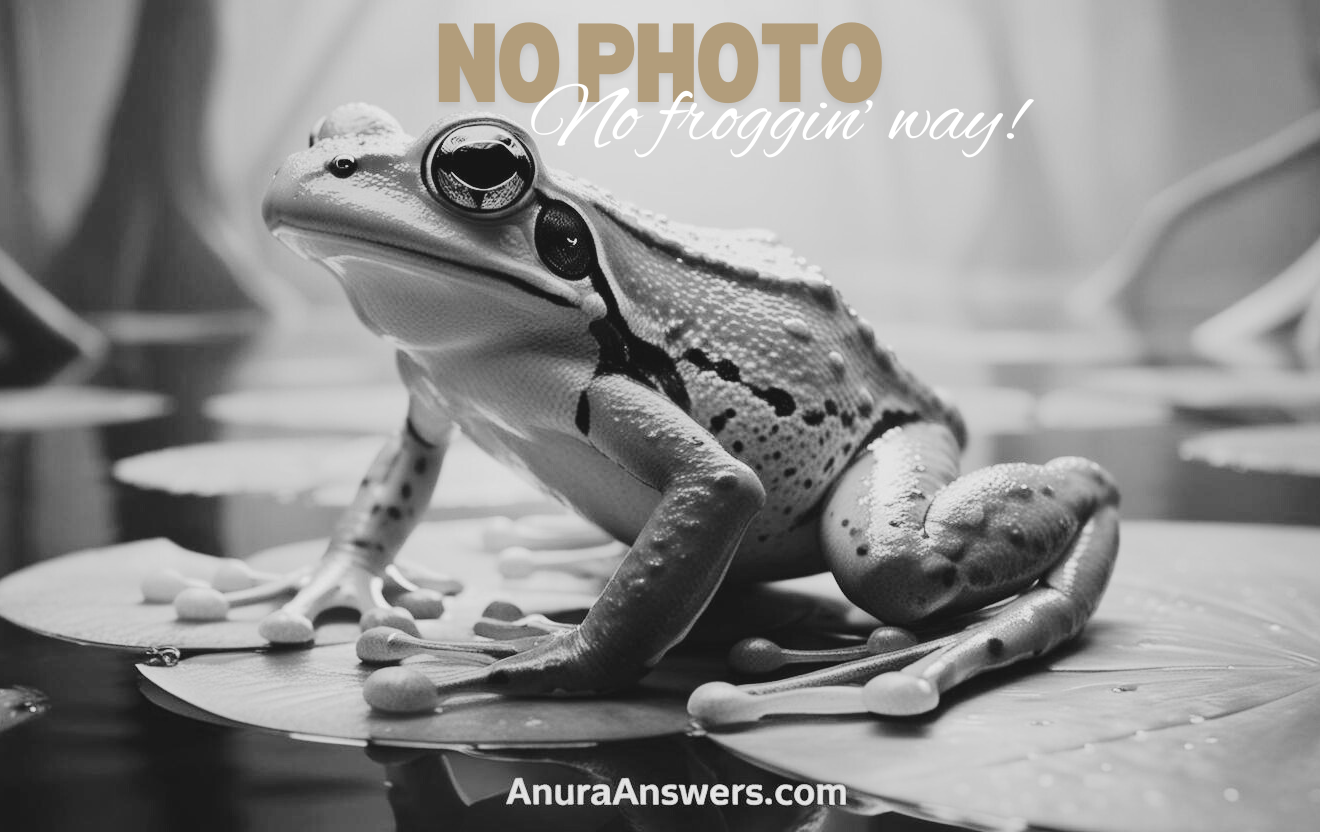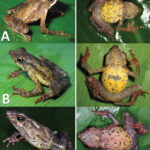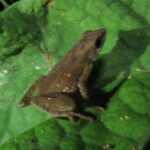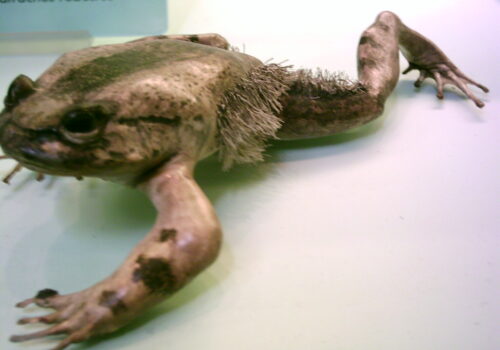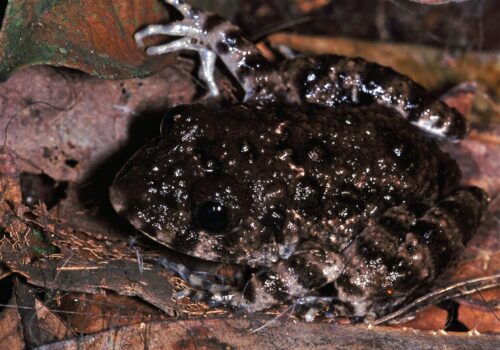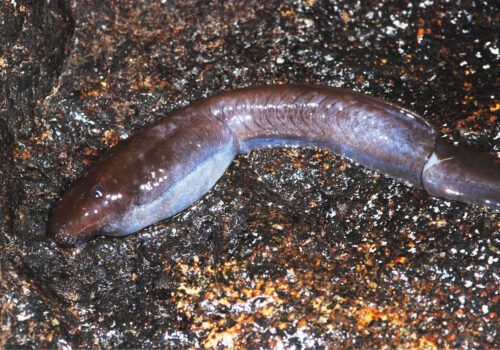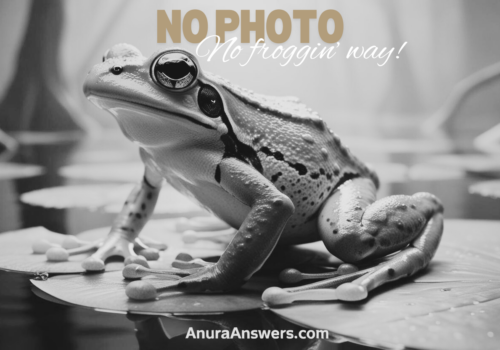Leaping Into Mystery: The Enchanting World of Leptodactylodon ventrimarmoratus#
Beneath the veiled canopies of West Africa’s lush rainforests, among tangled roots and whispering leaves, a diminutive creature quietly thrives. Shy yet remarkably resilient, exquisitely patterned yet nearly invisible, the delicately named Leptodactylodon ventrimarmoratus—an amphibian whose very existence whispers of ecological mysteries yet to be unraveled—makes its home here.
Its scientific name, Leptodactylodon ventrimarmoratus, translates evocatively as “the slender-toed one with the marbled belly,” a fitting epithet for a creature adorned with intricate patterns reminiscent of ancient mosaics. This fascinating amphibian not only charms naturalists with its striking appearance but also piques scientific curiosity due to its unique biology and remarkable adaptability.
But beyond its intriguing appearance, Leptodactylodon ventrimarmoratus plays a vital role in its ecosystem, quietly maintaining the delicate balance of life within remote forest ecosystems. Little known to many, yet slowly becoming better understood through diligent study, this charming frog species holds secrets critical not just for amphibian conservation but for understanding the broader narrative of biodiversity itself.
Dive with us as we uncover the captivating story of Leptodactylodon ventrimarmoratus, a tiny citizen of the rainforest whose life story offers powerful lessons for conservation, ecology, and our own place within the planet’s wondrous diversity.
Taxonomy and Classification#
Leptodactylodon ventrimarmoratus is a member of the Arthroleptidae family, a fascinating group of African frogs that share characteristics such as slender digits, diverse vocalizations, and unique reproductive habits. Within the Arthroleptidae family, our featured species resides in the genus Leptodactylodon, a group sometimes referred to as egg frogs due to their intriguing reproductive strategies.
This genus is relatively small yet boasts significant ecological importance, especially within the intricate network of tropical African forests. Taxonomists focus particular interest on the genus Leptodactylodon, in part because many species within it demonstrate a close dependence on pristine stream conditions and undisturbed forests.
With the complete binomial classification of Leptodactylodon ventrimarmoratus established in 1904 by zoologist George Albert Boulenger, this species is closely related to other regional members of the genus such as Leptodactylodon albiventris, though differing significantly in appearance and ecology.
Natural Habitat#
To meet Leptodactylodon ventrimarmoratus, you must venture into a world filled with shadowy emerald hues and symphonies of insect calls—a dense tapestry of tropical African forests. Primarily, this species makes its home in western Cameroon and eastern Nigeria, regions known internationally for their extraordinary biodiversity and lush, evergreen landscapes.
An Amphibian’s Paradise: Mountainous Stream Habitats#
Within this lush embrace, the species exhibits a marked preference for shady forested streams—small rivulets trickling quietly under the towering hardwood canopies typical of these mountainous areas. Here, moisture saturates the air, creating perpetual humidity essential for the species’ delicate dermal balance. Rich mosses, accumulated leaf litter, and gently eroded rocks provide an array of microhabitats that this tiny amphibian expertly exploits.
The species tends not to wander far from these secluded waterways, relying heavily on the stable temperatures, moisture-rich alcoves, and abundant prey populations supported by intact forested landscapes. Ephemeral forest pools tucked beneath overgrowing ferns and fallen logs often serve as vital breeding grounds.
Physical Characteristics#
Despite its diminutive stature—adults rarely exceeding 3 to 4 centimeters—Leptodactylodon ventrimarmoratus is strikingly attractive. Distinctively marked and intricately camouflaged, the frog is adorned in earthy tones ranging from olive-brown and deep amber to chocolate hues, seamlessly blending into leaf litter or damp, moss-covered rocks.
However, beneath this subtle exterior lies its most unforgettable feature: its marbled underbelly. Swirls of pale cream, bronze, and darker spots make the ventral surface resemble refined marble artistry, thus inspiring its evocative species name. These markings serve as part of a cryptic camouflage strategy, making it nearly impossible for predators—and even field researchers—to spot once it has settled into the foliage-rich habitat.
The frog sports slender, elongated digits—perfect tools for traversing slick, rocky stream banks or delicately navigating through leaf litter. Its large, expressive eyes occupy a prominent position on its streamlined head, a trait familiar among ground-dwelling frogs that often rely heavily on visual cues to capture fast-moving insects.
Behavior and Life Cycle#
An Expert Predator Amongst Fallen Leaves#
Leptodactylodon ventrimarmoratus is primarily insectivorous, feasting on the myriad small arthropods abundant in its rainforest habitat. With stealth and precision, it ambushes ants, beetles, small spiders, and other invertebrates, contributing to a well-balanced ecosystem by regulating insect populations.
Mysterious Courtship and Quiet Calls#
Mating rituals of this fascinating species remain somewhat enigmatic to herpetologists, yet some insights reveal subtle behaviors adapted to life within dense, noisy rainforests. Males produce gentle, low-frequency calls at dusk, meant primarily to avoid attracting predators while successfully signaling potential mates. Once a female shows interest, courtship is discreet and occurs in quiet refuge, often concealed in thick vegetation near reproductive pools or streams.
Eggs are typically laid along moss-covered rocks adjacent to running water, a critical environment for embryonic development. Tadpoles emerge with morphological adaptations, such as suctorial mouths and flattened bodies—designed specifically for life in flowing streams. Within several months, metamorphosis concludes their aquatic stages, producing tiny, fully-formed froglets ready to explore their terrestrial rainforest home.
Ecological Role#
This elusive frog, although small, occupies an ecological niche that makes it a significant player within its forest ecosystem. Its predatory activities contribute to regulating insect populations, thereby helping maintain balanced and healthy ecosystem dynamics. Concurrently, it serves as a vital food source for myriad predators—from small snakes and carnivorous invertebrates to birds and mammals—thus providing essential energy transfers within the intricate rainforest food web.
Additionally, Leptodactylodon ventrimarmoratus acts as a sensitive indicator species, reflecting the health and stability of its delicate streamside habitats. Declines in this species often accompany negative environmental changes such as habitat fragmentation, pollution, or deforestation, thus alerting ecologists to larger, underlying ecosystem problems worth addressing.
Threats and Conservation Status#
Unfortunately, this charismatic amphibian faces numerous environmental threats—chief among them habitat destruction. Human encroachment—through logging, agricultural expansion, and infrastructure projects—fragments ideal forest habitats, isolating populations and reducing their genetic exchange and population resilience.
Climate change poses yet another looming threat, altering rainfall patterns and introducing weather extremes that threaten the frog’s delicate balance between aquatic and terrestrial life phases. While data remain limited, ongoing monitoring suggests that populations have significantly declined, earning the frog a designation of Near Threatened by the International Union for Conservation of Nature (IUCN).
Cultural and Scientific Significance#
While not widely recognized in local folklore, Leptodactylodon ventrimarmoratus serves an equally critical role as a scientific emblem demonstrating the ecological value of amphibians. Researchers studying this species gain invaluable knowledge of how changing environmental conditions impact not just amphibians but entire forest ecosystems. Its sensitivity to environmental changes offers essential lessons in understanding ecological resilience and biodiversity conservation within complex tropical systems.
Conclusion: A Leap Toward Conservation Action#
Though small by any standard, Leptodactylodon ventrimarmoratus carries immense ecological significance. Through understanding its biology, habitat preferences, and environmental vulnerabilities, we gain critical insights that can guide broader conservation strategies aimed at safeguarding not only African amphibians but all biodiversity sheltered by the continent’s irreplaceable forests. We encourage nature-lovers and conservation advocates alike to delve deeper into the protection of this remarkable and visually captivating frog—an important yet overlooked jewel woven into the intricate tapestry of our planet’s life.
